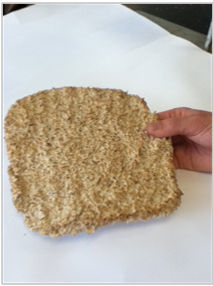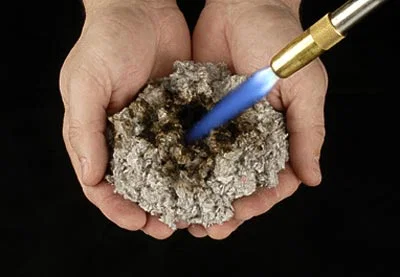25% Stronger, 100% Biobased Fiber Board
By replacing commonly used formaldehyde-based resins with a new type of binder, researchers at UMaine have developed fiber board building material that is nontoxic, made entirely from renewable materials and is 25% stronger than currently available products. The new binder includes cellulose nanofibrils (CNF), which are wood fibers about 200 micrometers in length and 30 nanometers wide. The CNF is manufactured using a UMaine proprietary mechanical process that is free from harmful chemicals or additives.
Benefits:
- Reduction in health problems and related expenses (up to $48m per year 1) caused by formaldehyde exposure.
- Up to 25% increased product strength.
- All components, precursors and processing materials are renewable and nontoxic.
Oil and Grease Resistant Paper Coating
A stable, aqueous barrier coating composition includes: (a) prolamine; (b) cold water insoluble polymer; (c) water; (d) water-soluble co-solvent; and (e) stabilizer. The composition, when applied to a substrate, produces an article having a high surface energy and resistance to oil and grease penetration. A method of producing the article involves applying the composition to a substrate.
UMaine Tech ID 2005-08
US Patent Number 7,737,200
US Patent Pending 12/815334
Inventors: Anthony Jabar Jr., Micheal A. Bilodeau, David J. Neivandt, Jonathan Spender
License Available
Zeolite Composite Materials for Waste Odor Control
A composite material for environmental odor control is useful in controlling odors from waste, for example, as an alternative daily cover for landfills and in composting applications. The composite material includes a fiber web and a zeolite containing metals to promote absorption of odorous has.
US Patent 8,100,605
UMaine Reference: 2008-35
Inventors: Karl Bishop, Susan Mackay, Michael Bilodeau
License exculsively to Zeomatrix
Fire Resistant Cellulose Insulation
End users and installers of insulation want a product that is affordable, efficient and safe. Cellulose insulation, generally produced from recycled wood fiber, is affordable and outperforms fiberglass in extreme weather. But cellulose has poor insect resistance and fire retardant qualities without the addition of toxic chemicals. Additionally, the cellulose insulation manufacturing process currently used creates a product prone to settling, which is bad for the homeowner, and dust, which is bad for the installer. ProCell Insulation solves all of these problems, making it a very attractive choice compared to fiberglass and other cellulose insulation brands.
The technology was developed at UMaine in collaboration with the company founders. Company is currently developing manufacturing and distribution networks. Learn more at procellinsulation.com
UMaine Tech ID 2009-34
US Patent Number 8,043,384
Fire Proof Paint
A fire resistant paint includes a film-forming binder, a solvent, and a hydrated mineral that imparts fire resistance to the paint. The paint, when applied to a fibrous composite article which comprises at least about 20 wt % lignocellulosic fibers bound together into a consolidated fibrous article, provides the article with a flame spread index of not greater than about 50.
Inventors: Mike Bilodeau, Mark Paradis
atent Pending, Canada and US 13/061,583
UMaine Reference: 2008-26
Contact Kris Burton


